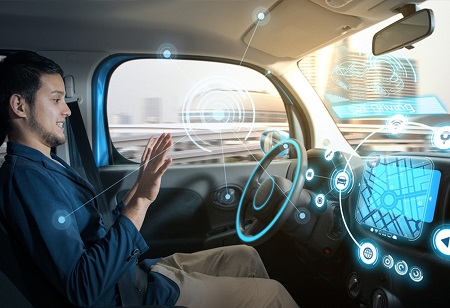
The global sensors industry is anticipated to reach USD 50.35 billion by 2031. The combination of cameras and sensors is becoming a game-changing factor in the automotive industry, which is about to undergo a significant technological transformation. The integration of advanced hardware and intelligent software is dramatically transforming what cars can do, paving the way for self-driving vehicles and enhancing safety functionalities. This comprehensive article delves into the intricate relationship between sensors and cameras, unveiling their varied purposes and the substantial impact they exert on the progress of automotive technology.
Proximity sensors that were once relegated to simple ultrasonic systems are today evolved into sophisticated technologies that include LiDAR, which has transformed the way vehicles perceive their surroundings. These play a major role in real-time obstacle detection, rendering drivers with more awareness and helping them in complex tasks such as parking.
With 177 patents filed, Denso is one of the top organizations in the obstacle detectors innovation landscape. The obstacle detection system of Denso makes use of a radar device which first directs a radar wave forward of the vehicle and then it evaluates the radar echo.
Toyota & Honda are a few other notable patent filers in the same industry.
The unique sensors of Continental AG are designed exclusively for electric mobility in order to protect the essential parts of the Battery Electric vehicle and this is carried out by detecting harmful impacts, monitoring key parameters as well as ensuring efficient operation.
The combination of radar and cameras in collision avoidance systems displays a huge leap in vehicle safety and this explores the intricate interplay among the components by showcasing their capability of detecting potential collisions, issue warnings and also take corrective actions in order to avoid accidents in some cases.
Owing to technological advancements, cameras have become the eyes of Advanced Driver Assistance Systems which comes with features that include automatic emergency braking & lane departure warning. These features will help in avoiding accidents & ensuring heightened safety for drivers.
Mobileye Global Inc develops autonomous driving technologies as well as advanced driver assistance systems including cameras, computer chips and others.
Surround view cameras have revolutionized the parking assistance & maneuvering in tight spaces by providing a 360-degree perspective. These cameras help in improving spatial awareness, addressing blind spots & ultimately making parking a more intuitive as well as secure process.
What has elevated the capabilities of cameras in the automotive landscape is the incorporation of computer vision & image processing technologies. Also, these advancements have improved the accuracy as well as reliability of information gained via cameras that have contributed to the overall efficacy of ADAS.
"The next stage of digital transformation has begun, and it connects to billions of objects and devices that are gathering and transferring data from ever-evolving sensors at the farthest reaches of the networks. An object can be a smart, connected node in the Internet of Things or any number of autonomous systems if it has some form of electrical power, including connected vehicles, wearable technology, smart buildings, and smart cities," says Dr. Balaji Venkataraman, President, TVS Sensing Solution.
"Sensors have applications in almost every industry vertical with the highest usage in consumer electronic products, followed by automotive and IT & Telecom," he adds.
The integration of sensors is a fundamental aspect of self-driving cars. It involves combining data from various sensors to generate an exceptionally accurate and comprehensive depiction of the car's surroundings. The primary goals are to improve the perceptual capabilities of self-driving cars and generate a reliable and dependable understanding of the surrounding environment. RADAR, GPS, Lidar, and IMU are among the sensors typically present in self-driving vehicles.
To advance self-driving capabilities, it is crucial to incorporate sensors and cameras into autonomous driving technology. These essential components enable the mapping of the vehicle's surroundings and ensure accurate positioning, thus enhancing the effectiveness of self-driving technology.
Autonomous vehicles rely on highly detailed maps which go far beyond traditional navigation maps. High definition maps comprise information that includes road boundaries, detailed 3D representations of the environment, lane markings and traffic signs. These are highly crucial for understanding the road geometry, supporting decision making algorithms & route planning.
The integration of cameras as well as sensors displays a transformative phase in the automotive landscape. The advanced components are reshaping the transportation landscape right from improving the safety features & driving assistance systems to laying the foundation for autonomous driving. As we traverse this era of innovation, addressing the ethical considerations as well as addressing challenges becomes highly important for ensuring the sustainable integration of these technologies. The incorporation of cameras and sensors propels the industry towards a safer, highly efficient & interconnected future while augmenting the driving experience.
We use cookies to ensure you get the best experience on our website. Read more...